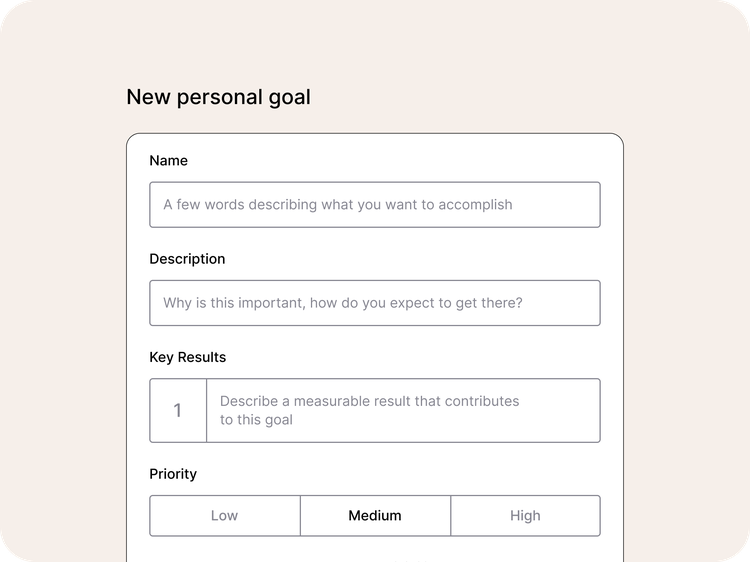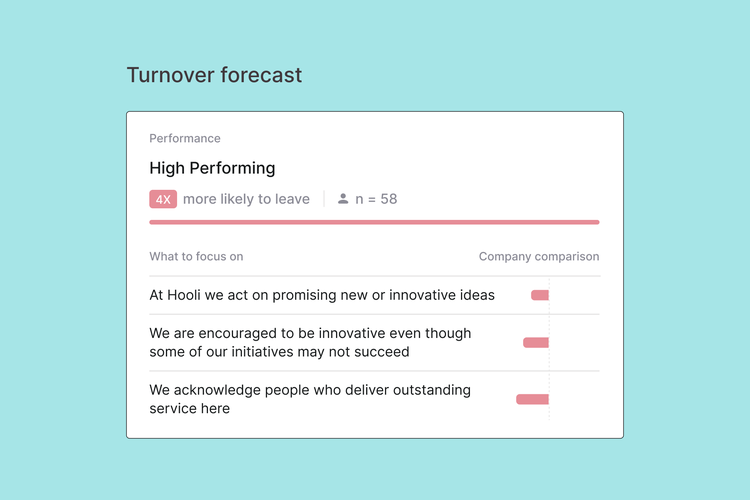
How modern managers align employee engagement & performance

Managers in today’s workplace shoulder more responsibility than ever. This may sound daunting, but it can be a positive thing for managers who want to have a wider, more holistic impact on their organization.
Good managers have always been accountable for team performance. However, over the years, their responsibilities have expanded to be more holistic and include both the team’s performance and engagement — do they feel connected, enthusiastic, and included in your organization and its mission?
The idea that employees need to be micromanaged – constantly told what to do and how to do it – is outdated. Today’s workers and teams flourish when they’re empowered and given more freedom to do their jobs. As a manager, you need a more holistic approach that connects performance and engagement. When you bring these two things together, you can foster an environment where each team member understands the organization’s strategy, the team’s goals, and how their work contributes to each of them.
Modern managers inspire their team and help each member sustain their own high performance and sense of purpose.
This may seem like a lot, but you can do it. We’ve compiled a list of 11 tips to help you succeed as a modern manager. These tips will enable you to nurture better individual performance, boost employee engagement, and increase team effectiveness.
Improve individual performance with better, more engaging performance reviews
You can help your employees be their best if you supplement your people skills with the right technology and data. Follow these tips for more human, effective, and fair performance conversations.
1. Set clear goals and measure against them.
An old business axiom says, “What gets measured gets managed.” Decades of research show the positive impact that goal setting has on performance. Beyond just hitting your numbers, the 2014 Stanford University study referenced in the link above showed that having goals and a collective sense of purpose improved understanding of team success criteria and enhanced information flow and decision-making quality.
For goals to be clear, they need to be SMART (Specific, Measurable, Ambitious, Relevant, and Time-bound). It’s also essential for team goals to be aligned with overall organizational objectives. For example, on the Culture Amp platform, you can easily align your goal to one or more higher-order department and company goals while creating the goal.

2. Guard yourself against your biases
Bias is an error in judgment that happens when a person allows their conscious or unconscious prejudice to affect the evaluation of another person. Everyone is biased in one way or another, and their biases can manifest in many different situations in the workplace.
During a performance review process, you need to be keenly aware of your biases because they could lead to inflated or deflated ratings, which compromises the fairness of the process. A few of the biases to guard against in the performance process include:
- Recency bias: Focusing on recent performance rather than the entire evaluation period
- Leniency bias: Giving favorable ratings even when there’s room for improvement
- Gender bias: In evaluations, focusing more on the personality and attitudes of women versus more on the behaviors and accomplishments of men
3. Give constructive feedback
Feedback needs to be a regular part of the performance process. It’s not uncommon for managers to avoid difficult conversations. Even though this might come from a good place, it can undermine the individual's growth and the team's success. If you want to be an effective manager, you need to be able to deliver candid, constructive feedback. Prepare for the conversation, and make it specific, actionable, and future-focused.
4. Confirm understanding
Even if you think you did everything right, the feedback you offered may not have been received the way you intended. Summarize your key points and confirm any action items when wrapping up the conversation. Ask your employee, “What do you think about this? How is this landing with you?” This will allow you to clarify any confusion and open the door for the employee’s commitment to the next steps.
5. Establish a follow-up cadence
Performance needs to be an ongoing conversation with your employees. Set clear next steps and define your expectations so your report can come into the following conversation prepared.
Boost individual engagement by listening to your employees
Employee performance and employee engagement are deeply connected. It’s difficult for employees to perform their best if they don’t feel enthusiastic and connected to the organization. And as a manager, you are in the best position to address issues and boost individual engagement.
Connecting engagement and performance on your team becomes much easier when you take the following steps to gather data and engage in conversation, listening, and action.
1. Survey often
You may get team results from company-wide engagement surveys annually or quarterly. Insights from these surveys are highly valuable, especially when comparing results for your team against benchmarks inside and outside your company.
We recommend this manager action guide to learn more about understanding and acting on your results. However, that’s only a start. You could also consider sending pulse surveys to your team more frequently. These surveys have fewer questions and focus on measuring team engagement, specific actions, and changes.
2. Analyze the data and openly discuss it with your reports
When you get your team's survey results, they might seem overwhelming. Where do you even begin? To start, remember the goal: you are trying to create a shared understanding of the employee experience so that your team members can make informed decisions on where to focus and take action.
Sharing guidance with your team can be powerful if you focus on the goal and avoid sharing any information that could get you into a “who said what” scenario. Provide only the information team members need to find a focus or gain a shared context – no more, no less.
3. Actively listen
Truly listen when you engage with your employees about survey results. Pay attention, listen more than you talk, withhold judgment, and reflect on what they’re saying. Creating regular opportunities to talk with your team is also a good idea. Listening can’t be a “one-and-done” thing. You need to create a culture of listening.
4. Set up the next steps
Confirming your understanding of what you heard and setting up a straightforward follow-up process is critical. Taking action on what you hear is key to winning employee trust and getting your people to keep up the conversation.
With engagement survey insights and actions that ensue, you are becoming equipped to be a holistic manager and build a more effective team, especially as you integrate this data into the performance conversation.
Increase team effectiveness by leveraging engagement and performance data
Managers can use engagement and performance data to create a better team environment and uplift the whole team.
1. Culture Amp gives you the power to be predictive
There is a clear relationship between engagement data and performance results. Culture Amp helps predicts moments in the employee experience that lead to high performance and alerts leaders to turnover risks based on engagement and performance insights.
For example, an employee who answered favorably to the “I am feeling productive” question in the onboarding survey was found to be 4.2 times more likely to become a high-performing employee. Also, knowing when a top-performing employee is at risk of leaving gives you more power to be proactive and take steps to retain a valued employee.

2. Focusing on improving fairness
Modern performance tools are designed to drive fair performance reviews. For example, recency bias is a common flaw in a traditional annual performance review because it’s easy to forget what happened nine months ago and focus much more on recent actions. With modern tools, it’s easier to nurture ongoing feedback with leaderboards that rank managers on the amount and the quality of the feedback. In a busy week, it’s easy to forget to offer feedback to your team members. Keeping a running tally ensures you share timely, relevant, and specific feedback.
Modern management builds stronger teams
Modern management is about helping direct reports set goals, improve their jobs, and accomplish what they've set out to do. This is the heart of performance management. Boosting engagement goes hand in hand with these practices as employees feel enthusiastic and connected with their organization and put in the extra effort. Together, they form the foundation of modern, holistic management.





